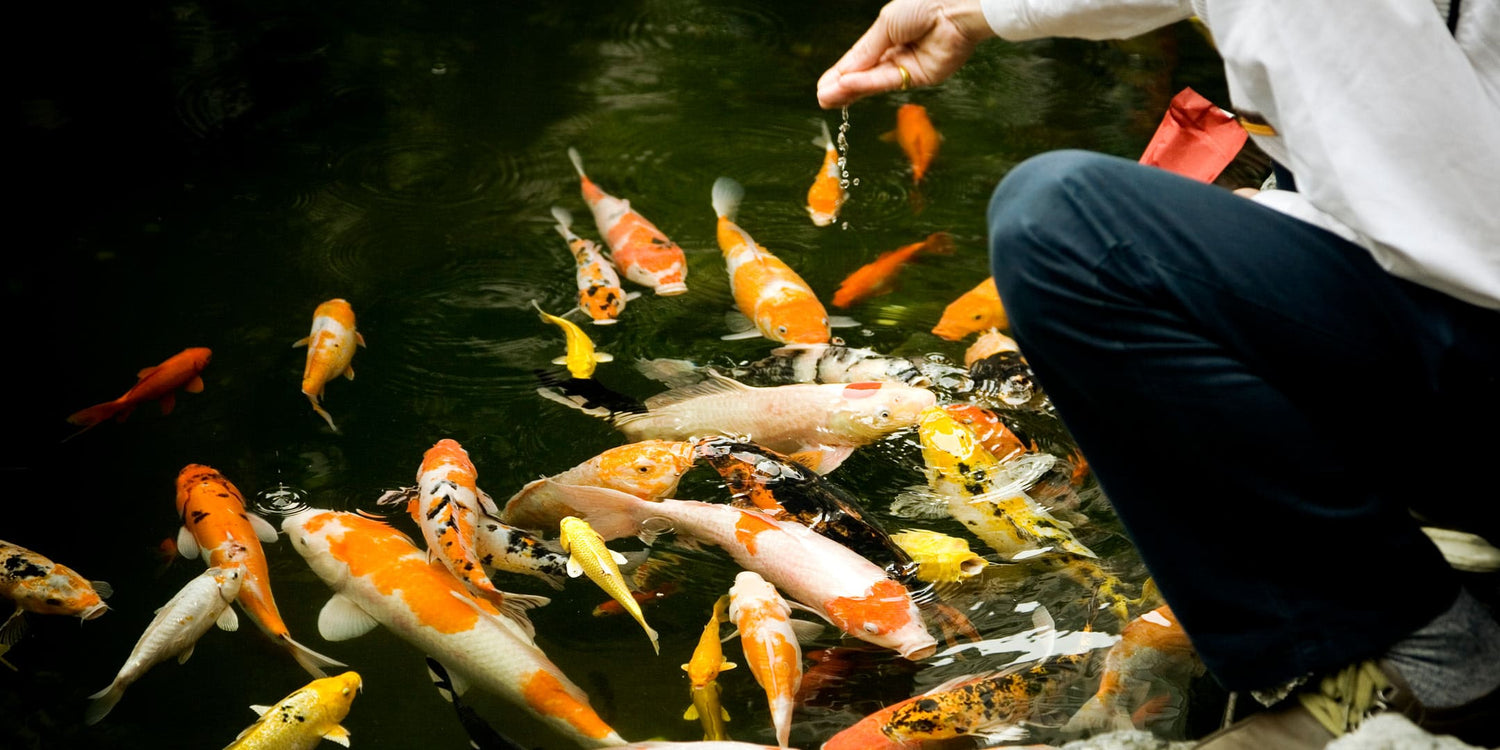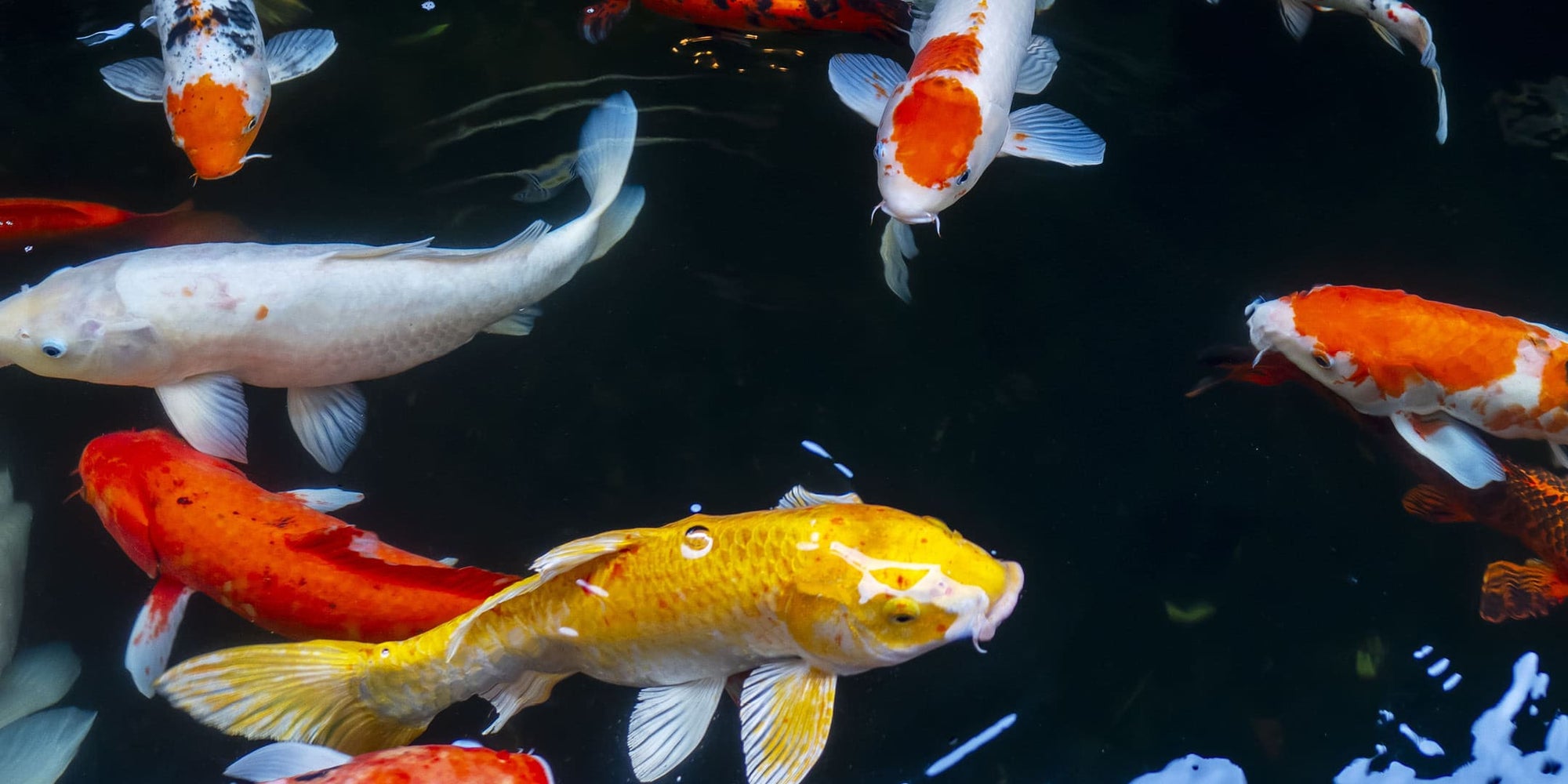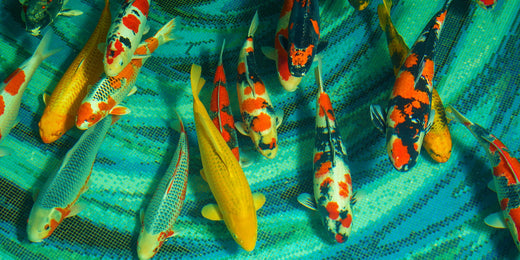Autor: Dr Sabine Ozgönül-Wagner
It is much more difficult to recognise whether a fish likes the food and whether it is good for it than it is for dogs or cats
Proper feeding is one of the most difficult issues in animal husbandry. With dogs and cats, there are even trench wars - conducted with almost religious fervour - about who is the better can opener. The vegan or the BARFer, home-cooked or vegetarian, tinned or dry food,.... Even with land mammals, it is of course not unimportant what comes out at the end - whether gaseous or solid - but at least it usually doesn't end up in your living room. With fish, many things are different and also much more difficult...
What should I bear in mind when choosing fish food?
- It is much more difficult to recognise whether a fish likes the food and whether it is good for it than it is for dogs or cats
- In the case of warm-blooded fish, factors that do not play a role in warm-blooded mammals must be taken into account
- The effect of the food on the gills and skin (and above all on the colour of the skin) is particularly important for ornamental fish
- Ornamental fish usually live in a small closed system and do not have a toilet
- The influence of the surrounding medium of water is much greater than that of the air surrounding us
- What do carp actually eat in the wild?
The koi is a carp
Let's start from the beginning: The koi is a carp. Even if it looks colourful and elegant, it is a carp (Cyprinus carpio). Carp are - important note - COLD-TOLERANT WARM-WATER FISH! This means that their metabolism, immune system and digestion only work really well at water temperatures of 15°C and above. It feels most comfortable between 15 and 24°C, eats, grows and thrives - as long as the water contains sufficient oxygen. If the water temperature drops below 4°C, the fish are at risk of cold damage, which does not always lead to death immediately, but can accumulate over the years and lead to long-term damage to various organs. Sudden temperature fluctuations can also cause massive problems, whereby a sudden drop in temperature is much less well tolerated than a rapid increase. It is best to plan 2.5 days per °C temperature change.
Note: the koi can survive from 2 - 35°C, better between 4-28°C, sufficient oxygen supply important, avoid sudden temperature fluctuations
Why is temperature important when eating?
The carp is a warm-blooded creature whose body temperature is only just above that of the surrounding water. This is accompanied by changes in metabolism. For example, the activity of digestive enzymes decreases as the water temperature drops. At the same time, however, the energy and oxygen requirements also decrease, as does the speed of metabolic processes. The pH value of the water also plays a major role. A slightly acidic pH range is favourable for the carp, as at values between 6.2 and 6.5, excreted protein breakdown products tend to be present in the water as harmless ammonium and only to a small extent as toxic ammonia. However, the water values are another topic in their own right and should be discussed in more detail elsewhere.
Composition of koi food is of crucial importance
It is known that fat is the main source of energy in the diet, followed by carbohydrates. Studies have shown that wheat is a good source of carbohydrates for fattening carp. Fat is even better, especially fish oil. If a carp feed contains sufficient fat as an energy source, the excretion of ammonium/ammonia decreases dramatically, which is very beneficial for the fish's organism and, above all, for the pond system [4]. By increasing the fat content of the feed from 5.6 % to 17.4 %, the excretion of ammonium/ammonia as well as the overwintering losses were almost halved [1].
Now there are koi owners who have a beautifully tidy pond and no longer feed their fish above a water temperature of 13°C because it would supposedly harm them. Have you ever seen a fish with a thermometer in the wild? No? Neither have I. Imagine we have an early and cold winter where the water temperature is below 13°C from October to March. Then the fish would not get any food for almost half a year with the above-mentioned owners and they would not find any natural food in a classic koi pond either. Where are the animals supposed to get the energy to cope with the temperature increase in spring?
Adjust the amount of food for the koi
The fish already know how long they can eat and as long as the animals show interest in the food, they will be fed. Only the quantity needs to be adjusted with a little sensitivity, but the correct amount of food will be the subject of another blog. The composition of the food also needs to be adjusted. In summer, the energy can come from carbohydrates. But be careful, too much carbohydrate quickly leads to obesity. In the transitional period and in winter, you should feed a conditioning feed rich in fat and protein. This is because, unlike carbohydrates, fats (unsaturated and preferably from animal sources) and proteins can be digested well even at low temperatures. A fat to protein ratio of around 1:2 is recommended. However, always pay attention to the amount of food, as otherwise the water values will deteriorate and food that is not absorbed will rot in the pond.
Note: the recommended composition of the food depends on the water temperature, at low temperatures the main energy should come from unsaturated fatty acids.
Why is that? Well, this is directly related to the food that carp have specialised in over the course of evolution. In the wild, carp live in murky ponds where they dig through the bottom for food with their undersized mouths. And what exactly do the little animals find in such a natural pond?
Carp are carnivores
The bigger the carp gets, the bigger the animals it eats. The main thing is that the prey fits through the mouth. In natural ponds, they mainly eat zooplankton (small larvae, water fleas, mosquito larvae, eggs of other fish, crustaceans and much more ) as juveniles [3][6]. With increasing size, snails, mussels, worms, larvae, freshwater shrimps and even small fish are consumed [5]. Carp have gullet teeth that can also be used to crack water snails. The house is spat out. Some plant food is also always consumed. In the case of plankton, this is automatic, as animal plankton feed on microalgae, some of which are still undigested in the zooplankton. The larger food animals also have pre-digested plant substances in their digestive tract. The adult carp - at least in its pond - is relatively high up in the food chain and ingests substances with its prey that have accumulated in them in the course of the food chain. Fibre, vitamins, unsaturated fatty acids, proteins, minerals,...
The carp's digestive tract is therefore ideally suited to digesting animal food, but can also process plant substrates, especially if these have been pre-digested by the prey animal or if the pre-digestion is imitated by heating. The "nibbling" on filamentous algae, which can often be observed in the pond, is actually a search for small food animals or, with a lot of luck, a previously undiscovered food grain. You can see from the animals' faeces that ingested filamentous algae are excreted more or less undigested. Unfortunately for many pond owners, koi obviously love certain aquatic plants, especially the tubers of most water lily species. In fact, the carp disdains little, even dry bread is gladly taken, but we humans also like to eat and drink various things that are not really good for us. In the warmer months in moderation When fed, neither bread nor silkworms or other treats pose a problem.
Automatic feeder relieves the pond system and digestion of the koi
In the wild, the animals are busy looking for food all day long and only eat small amounts at a time. In a koi pond, it is more or less normal to give the daily ration once or twice a day. This is not ideal. On the one hand, the animals get bored (little effort to search for food) and on the other hand, a few large portions put a strain on the pond system and especially on the fish's digestive system and gills. The koi's stomach, for example, is very small. It would be much better to give small portions throughout the day using an automatic feeder. This relieves the strain on the fish's system and digestive tract. The fish are also kept busy. To keep the fish busy, you can feed the special treats in the evening after work.
Sink feed - the most natural way of feeding
Last but not least, the form of food intake. Unfortunately, koi owners have to accept that carp are actually bottom feeders, i.e. they eat at the bottom of their habitat. Therefore, a sinking feed would be the most natural way of feeding. It is indeed advisable to feed sinking food during the winter months to save the animals the energy-consuming ascent to the water surface during the cold season. However, just like the amount of food, the practice of feeding in winter is an extensive topic in its own right. If you only ever feed your precious and beloved koi at the bottom, you run the risk of overlooking injuries, skin changes or problems with food intake, or at least noticing them until very late. It is therefore advisable to feed them at least part of the time with a floating feed . This gives you the opportunity to inspect the fish every day. I know of some ponds where a window has even been installed on one side so that the belly of the fish can be viewed without having to catch them every time.
Note: Carp live mainly on animal food and dig wells.
Sources
[1] Baur, W.H. & Rapp, J., Gesunde Fische, Parey Verlag p. 78 - 81, Nahrung und Energieprobleme [2] Geldhauser, Franz and Gerstner, Peter; Ulmer Verlag, Der Teichwirt [3] Schlott, Karin; 2007 Bundesamt für Wasserwirtschaft Ökologische Station Waldviertel, Die planktische Naturnahrung und ihre Bedeutung für die Fischproduktion in Karpfenteichen [4] Steffens, W.; 2000, Fischer & Teichwirt, 51, Heft 4, p. 145 - 147, Fütterung in der Fischzucht [5] Susta, Herrke & Lebeling, Stettin, 1887 - 251 p., Die Ernährung des Karpfens und seiner Teichgenossen [6] Wunder, W., Österreichs Fischerei 21 (1968), pp. 97-103, Das Plankton als wichtiger Bestandteil der Naturnahrung des Karpfens. Methods of plankton propagation.





